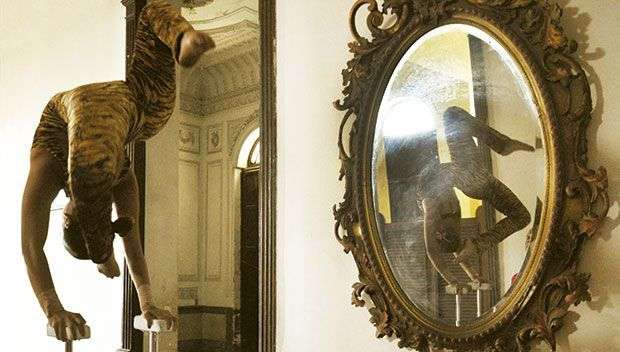The preeminent venue for the circus in Cuba is the Carpa Trompoloco. Every year, this coliseum in the Havana municipality of Playa also becomes the main venue for Circuba, an international event considered as “the circus bridge of the Americas to the world.”
The proven technical and artistic quality and virtuosity that distinguish Cuba’s circus artists today have sparked interest among businesspeople from other parts of the world who want them for their own companies. The Compañía Havana circus group, which has won two awards and the 2013 Circuba Gran Prix (with their popular “Flying Trapeze” or “Flight of the Bird” act) is now the country’s top troupe, and markets its circus acts around the world.
Compañia Havana, directed by Germán Muñoz—who has been involved with the circus for several generations—has about 158 artists working on contract, and divided into 38 artistic units: 18 in Cuba and 20 abroad. Most of the overseas units are scattered among the best circuses in the world, such as the Ringling Brothers and UniverSoul Circus, in the United States; the Cirque Pinder, in France; the Krone in Germany; and Blackpool Tower and Zippos in Britain. Cuban artists have represented Cuba’s National Circus at international festivals such as the Monte Carlo, in Monaco, and the Pistas de Paris, Festival Mondial du Cirque de Demain, Massy, Grenoble and Saint Paul les Dax, in France.
This international impact, which is based on the influence of the Soviet circus from previous decades and the existence of the National Circus School (Escuela Nacional de Circo), has become the main incentive for Cuban artists who face a local shortage of industry jobs. The challenge for continuing to develop this profession—given low wages and the reality of having just the Carpa Trompoloco—is to promote other locations where shows can be held that meet the requirements of this performing art.
Behind every artist there are many years of effort and professional training to achieve a quality act. Sacrifice and perseverance are essential for being at one’s best in front of the audience. So, what is it that drives Cuban circus artists? What encourages them to continue presenting their art in the ring?
Norelis Rodríguez Díaz (27 years old), one of the six young women who make up the Compañia Havana’s novel act Polldance, and the winner of a Silver Star in the recent Circuba event, sums it up as follows: “The everyday life of a circus professional is a little bit hectic; you have to be in many places at the same time: at home, with your spouse, studying, training, and exercising your profession. Nevertheless, there are lots of motivations. First of all, I think that this is a profession that you should love, over and above your needs and your dreams of traveling and being hired outside the country to learn about the world and to help your family. You have to enjoy it, feel it.”
Talented young gymnast Iyolexán Torres Álvarez (31), another member of the group, has a tattoo on his left shoulder that alludes to the famous Canadian company Cirque du Soleil. His aerial silks act earned him one of the collateral prizes in the latest Cuban circus event, granted by the National Union of Cuban Writers and Artists (UNEAC).
“In 2010 I was one of five finalists after a long casting process here by Yves Sheriff, one of Cirque du Soleil’s talent scouts. In the end, we were not able to join the company, given that they were having a difficult time with their finances, according to what they explained to me. Without question it was the most incredible experience of my career to have been on the threshold of belonging to a group that I admire so much, and I think that it is a demonstration of the potential that we have here. As a circus worker, I receive a monthly salary of 500 pesos, and it isn’t the norm here to pay for dangerous conditions. I think that what most motivates me and my colleagues is the passion—the passion for an art that used to be considered minor, but that today is more highly valued and very prestigious.”
The presence and interest of foreign artists, financiers, observers, journalists, and photographers is growing with every edition of Circuba. Cuba is consolidating its place as one of the Latin American countries with one of the longest and most professional traditions in this cultural expression. The desire to engage in exchange with and evaluation of Cuba’s renewed productions is the result of the great demand it enjoys internationally. According to experts, the key to this distinction lies fundamentally in demonstrating clear elements of Cuba’s idiosyncrasy in every act, in the rhythm of the artists’ movements and their enjoyment in the ring, especially the acrobats and gymnasts, who are considered among the five best in the world.
The circus is on the rise, and with it, Cuba’s practitioners of this centuries-old art are enjoying their best moment. While the most attention today is going to major productions marked by theatrical elements—Cirque du Soleil style—the professionals in this specialty are a mix of a wise correlation between the old and the new, the guidelines that are defining the circus arts of today.















